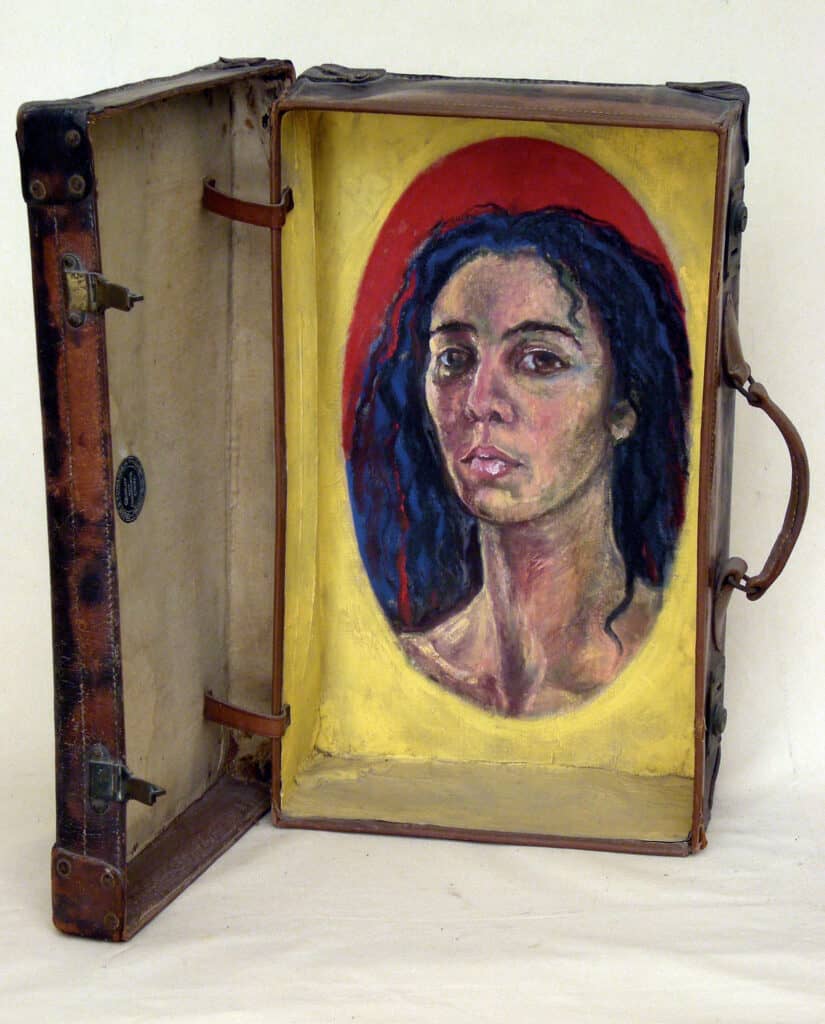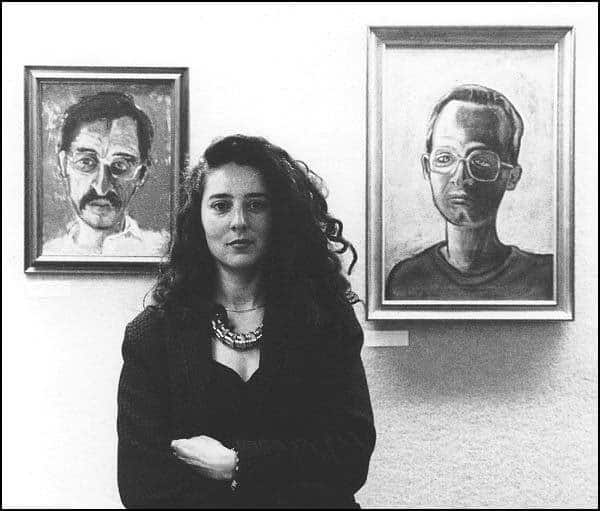Isabelle Borg was a Maltese painter, whose artistic practice defined her as a leading female in the artistic scene locally. Borg was born in London and resided there until 1973, and often travelled to Italy growing up, because it was the birthplace of her mother. At the age of fourteen, Borg moved to Malta to continue her formal education. Shortly after, she moved back to London in 1979, and worked as a record-sleeve designer and typographer with Decca Record Company. In 1982 she pursued her artistic studies at the Camberwell School of Arts and Crafts in London, where she graduated with a BA (Hons) in Fine Art Painting. In 1988, she returned to Malta and settled in Floriana, and later furthered her academic studies in History of Art at the University of Malta, where she obtained an MA in 1994. Shortly after, Borg began her career in artistic education, and began lecturing at the Department of History of Art at the Faculty of Arts, University of Malta. She also served as director of the Annual Synner School of Landscape Painting and continued to lecture at the University until her health permitted.
Artistically, Borg was primarily an abstract and figurative artist, whose works were marked by a strong and self-assured personality. Such qualities were evidently expressed in her choice of colour scheme and technical virtuosity, which rendered her art as monumental. Throughout her lifetime, she exhibited her art both locally, such as in the 1982 collective entitled ‘Women Artists of Malta’, and ‘Strange Cargo’ a the National Museum of Fine Arts in Valletta, 2008, as well as internationally in countries including Paris, the Netherlands and Germany. In addition to her artistic practice, Borg also published and collaborated with several academics in the artistic field, and also published her own publication in 2004, which was based on her MA thesis about the ex-voto tabella. Moreover, Borg further experimented in her artistic practice, through collaborations with Prof. Joe Friggieri. With this collaboration, Borg experimented in set design for Prof. Friggieri’s theatrical productions, and she also designed the book and artistic images for his book entitled Mitt Hajku. In 1998, she also designed four postage stamps that were commissioned for UNESCO’s Year of the Ocean by Posta (now MaltaPost).
Borg was known to have been a strong advocate for women’s rights, and often found herself having to stand up for herself, as a female artist within a male-dominated society. As a result, she founded Moviment Mara Maltija, and served as its president up to 1994. In 2007, Borg was diagnosed with pulmonary fibrosis, which is a degenerative disease that ultimately left her confined to her Floriana home, where she spent her final years painting until her unfortunate passing in 2010. Although Borg’s life was cut short, her impact on the Maltese modern art-historical landscape is undeniable, and her bravery certainly paved the way for several female artists until today.





